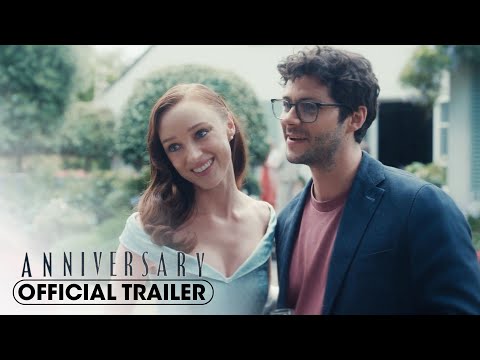Copyright Screen Rant

When it comes to horror movies, stop-motion animation has become one of the better forms for telling scary stories. Stop-motion has been around since the start of cinema, and it was even used in live-action fantasy films with Ray Harryhausen mastering the technique. In today's film world, it is primarily animated movies, though. Rankin-Bass Productions used stop-motion animation in holiday movies. However, in the 1970s, a company called Aardman Studios began working on stop-motion animation. Soon, Tim Burton and companies like Laika began experimenting with the technique, until stop-motion animated horror became a massive success. The House (2022) Released in 2022, The House was a wildly ambitious stop-motion animated horror film that explored the inhabitants of a single house across different eras. The film also deals with serious issues, including capitalism, the sense of home, existential crisis, dreams, and the sense of emptiness. The film also had different directors for each section. Emma de Swaef and Marc James Roels directed the first part, Niki Lindroth von Bahr the second one, and Paloma Baeza the third one. The first was about a human family, the second about a family of anthropomorphic rodents, and the third was set in a post-apocalyptic world. The House won a Primetime Emmy Award for Outstanding Individual Achievement in Animation and had six Annie Award nominations. The House also has a 97% fresh Rotten Tomatoes score, with critics praising the stop-motion animation and the weird storyline. Wendell & Wild (2022) Wendell & Wild was a Netflix-exclusive stop-motion animated horror movie released in 2022. What many fans might not realize is that the director, Henry Selick, also directed two of the most beloved stop-motion horror movies of all time, The Nightmare Before Christmas and Coraline. Wendell & Wild tells the story of a young girl named Kat, whose parents have died, leading her to become a juvenile delinquent, and two demons named Wendell and Wild, who learn they can resurrect the dead and trick Kat into summoning them. The cast is fantastic, with Key and Peele voicing Wendell and Wild. Critics awarded the movie an 80% rating on Rotten Tomatoes, praising the visuals and the "ambitious and inclusive story." What was really impressive was that Selleck believed stop-motion was almost indistinguishable from CGI, so he deliberately left in flaws to help it retain the charm the animation format once had. Frankenweenie (2012) Tim Burton is the man most people seem to think directed The Nightmare Before Christmas, even though he was only the producer of Henry Selick's film. However, Burton did direct two stop-motion horror movies of his own, and the one that means the most to him arrived in 2012 with Frankenweenie. That is because Burton also directed a short film version of Frankenweenie in 1984, but Disney balked at the idea of making it a feature-length movie at the time. Finally, 28 years later, Disney gave in and let Burton direct his film about a young boy named Frankenstein who brought his dead dog back to life with science. Tim Burton paid homage to Universal Horror movies by shooting this stop-motion animated film in black and white, and it became a modest box-office success. It also earned an Oscar nomination and won the Saturn Award for Best Animated Film. The Wolf House (2018) The Wolf House is an adult Chilean stop-motion animated horror movie. This film is based on the case of Colonia Dignidad, an isolated colony in post-World War II Germany, notorious for torture and murder of dissidents. The movie's story is presented as a fairy-tale propaganda film meant to indoctrinate its followers. The film's style was eclectic, with the directors employing various forms of filmmaking, including avant-garde, dark fantasy, surrealism, and supernatural horror, all of which used stop-motion animation. Critics praised the film, awarding it a 96% rating on Rotten Tomatoes. Reviews called the movie "surreal, unsettling, and haunting." The critics also praised the film, saying it remains surprising throughout. Corpse Bride (2005) In 2005, Tim Burton co-directed the stop-motion animated horror film Corpse Bride with Mike Johnson. The movie is a Gothic horror about a man named Victor who is planning to go through with his arranged wedding to Victoria. However, when he practices his vows in the woods, he accidentally marries a ghost named Emily. The voice cast is excellent, with Johnny Depp as Victor and Helena Bonham Carter as his Corpse Bride. It should also be noted that this is not technically a horror movie so much as a gothic romance with fairy-tale elements, something that Burton specializes in. The horror elements feature mostly sympathetic monsters. The movie was a decent success, although many expected it to be like The Nightmare Before Christmas, and this was a very different experience. Despite that, it earned an Oscar nomination and has an 84% rating on Rotten Tomatoes, with critics calling it "whimsically macabre." Mad God (2021) Mad God is one of the lesser-known stop-motion animated horror movies, but it deserves a lot more attention from genre fans. The film was released in 2022 and was directed by Phil Tippett, a special effects artist who previously worked on the original Star Wars trilogy, Jurassic Park, and RoboCop. This was an adult animated film that doesn't really have much of a conventional plot. A person known as the Assassin enters a hellish world with a map and a suitcase. He then travels through the underworld and encounters small creatures preyed upon by larger ones before he finally reaches his destination. What is most impressive about Mad God is that it took Phil Tippett 30 years to complete, making it a true passion project. The themes here seem to focus on capitalism and how businesses use employees, eat them up, and then discard them. However, it is primarily a visual experience rather than a conventional story. ParaNorman (2012) Laika has become one of the most successful stop-motion animated studios, making mainstream feature-length movies today. While Coraline was where they started, one of their more successful hits was the stop-motion horror movie ParaNorman. The film follows a young boy named Norman, who can see and speak with the dead. The movie uses stop-motion well while ensuring the characters remain cartoonish, a quality that worked even better in Laika's fantasy release, Kubo and the Two Strings. As for ParaNorman, it is almost shocking how scary this movie became, going from silly zombies to a terrifying ghost child that turns the entire story on its head. ParaNorman received an Academy Award nomination for Best Animated Feature and has an 89% fresh rating on Rotten Tomatoes. The Nightmare Before Christmas (1993) The Nightmare Before Christmas is a film based on a story by Tim Burton, directed by Henry Selick. It is a stop-motion horror movie that combines the fun of Halloween and Christmas. Jack Skellington is the ruler of Halloweentown, but he wants more. He has his minions kidnap Santa Claus and tries to bring his scares to Christmas. Made for only $18 million, the film became a massive success, grossing $108.5 million at the box office and remaining a beloved stop-motion animated classic that is revived every Halloween and Christmas. The Library of Congress also added it to the National Film Registry for its contributions to the world of cinema. The film received an Oscar nomination for Best Visual Effects and won the Saturn Award for Best Fantasy Film. Danny Elfman also earned a Golden Globe nomination for Best Original Score. Coraline (2002) Laika got its start in stop-motion horror movies with a masterpiece that has remained almost impossible to surpass. Based on the Neil Gaiman novel of the same name, Coraline follows a young girl whose parents move to a new home, where she finds a pathway to an alternate world where her parents are more caring, yet extremely deadly. There are some truly horrifying moments in the movie, especially when the Other Mother shows her true colors. The film is beautiful, with bright scenery, and its 3D release when it originally hit theaters was groundbreaking at the time, and it remains one of the most beautiful films shot in the format. The stop-motion was also perfect, with Henry Selick directing Coraline a few years after his last masterpiece, The Nightmare Before Christmas, proving he was still a master at this form of filmmaking. Wallace & Gromit: The Curse Of The Were-Rabbit (2005) Arguably, one of the best stop-motion animated horror movies of all time comes from a studio that has been working in the format for over five decades. Aardman Studios is a British stop-motion studio that made several short films featuring Wallace and Gromit before finally making a feature-length film about the duo. In Wallace and Gromit: The Curse of the Were-Rabbit, Wallace is a scientist who accidentally uses a contraption to turn himself into a giant Were-Rabbit with an insatiable hunger for vegetables. It is up to his loyal dog Gromit to help his master find a cure before a local hunter guns him down.



